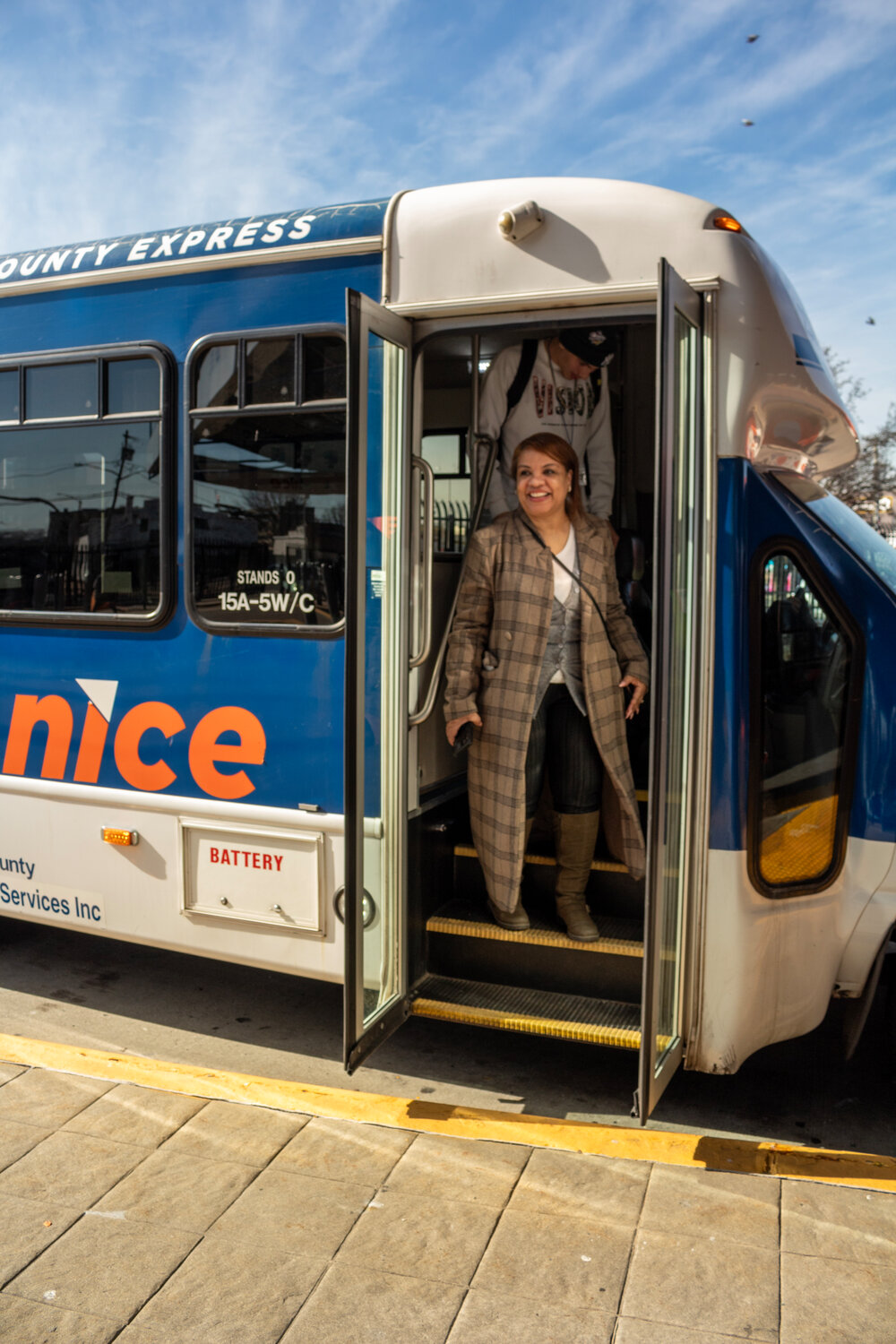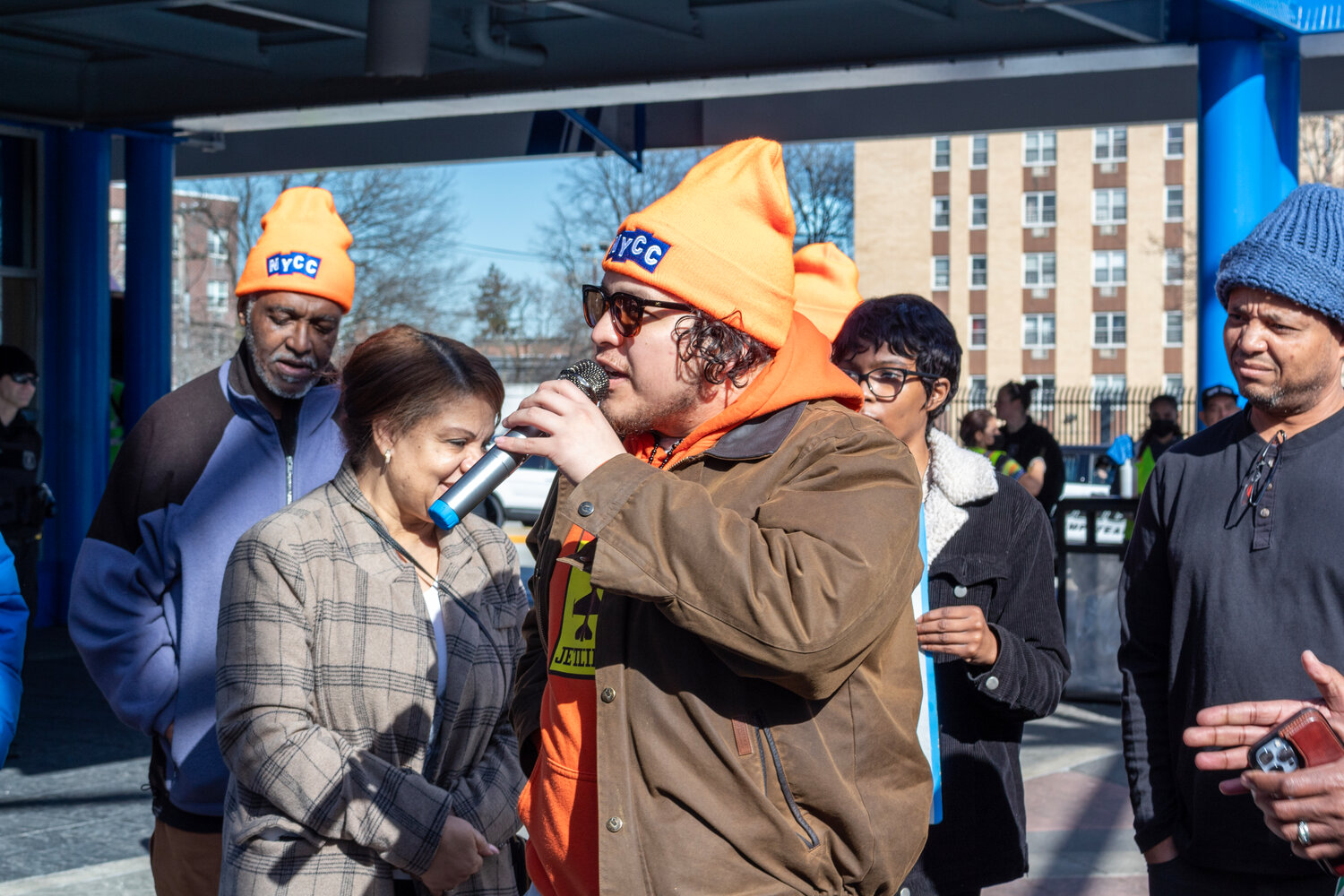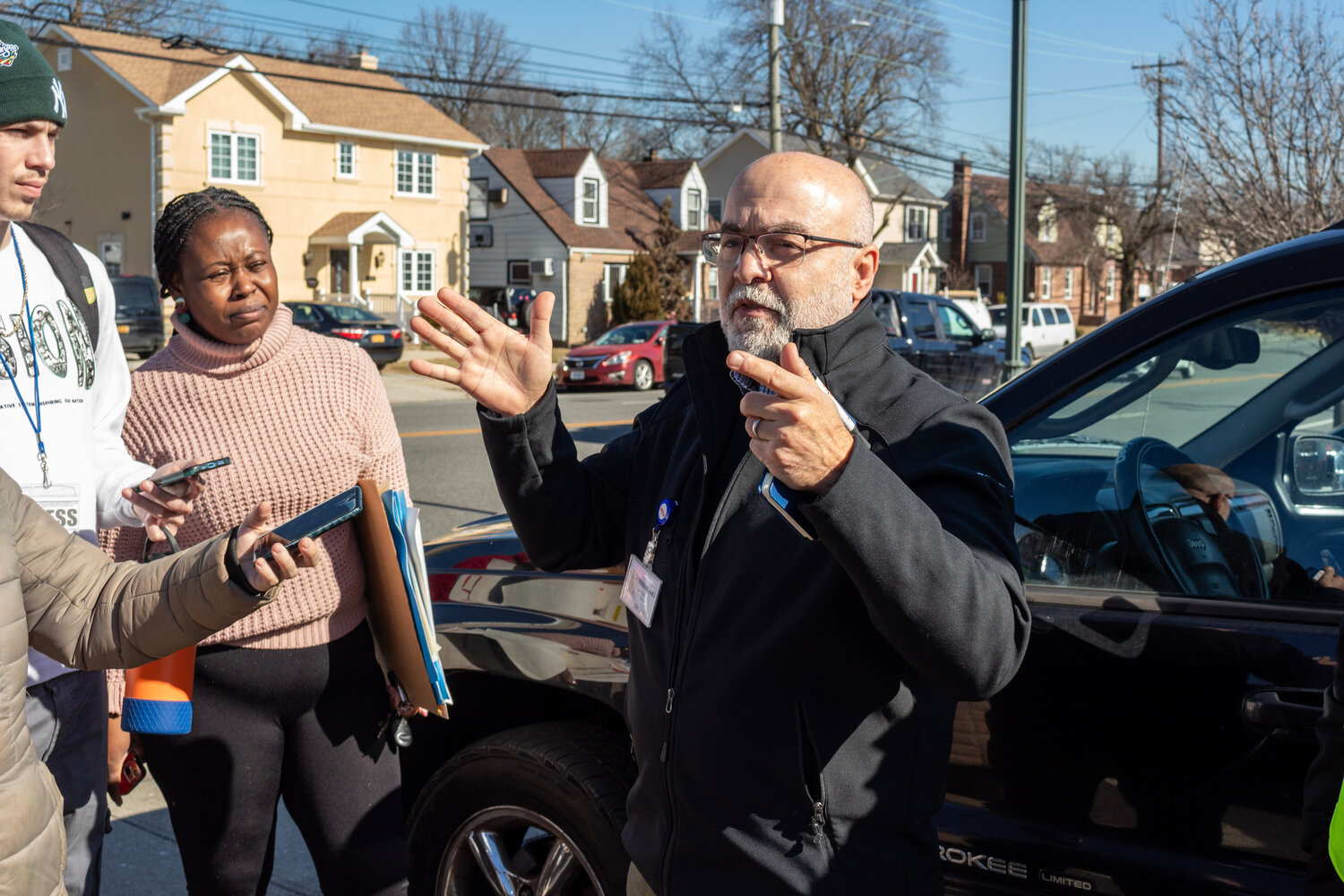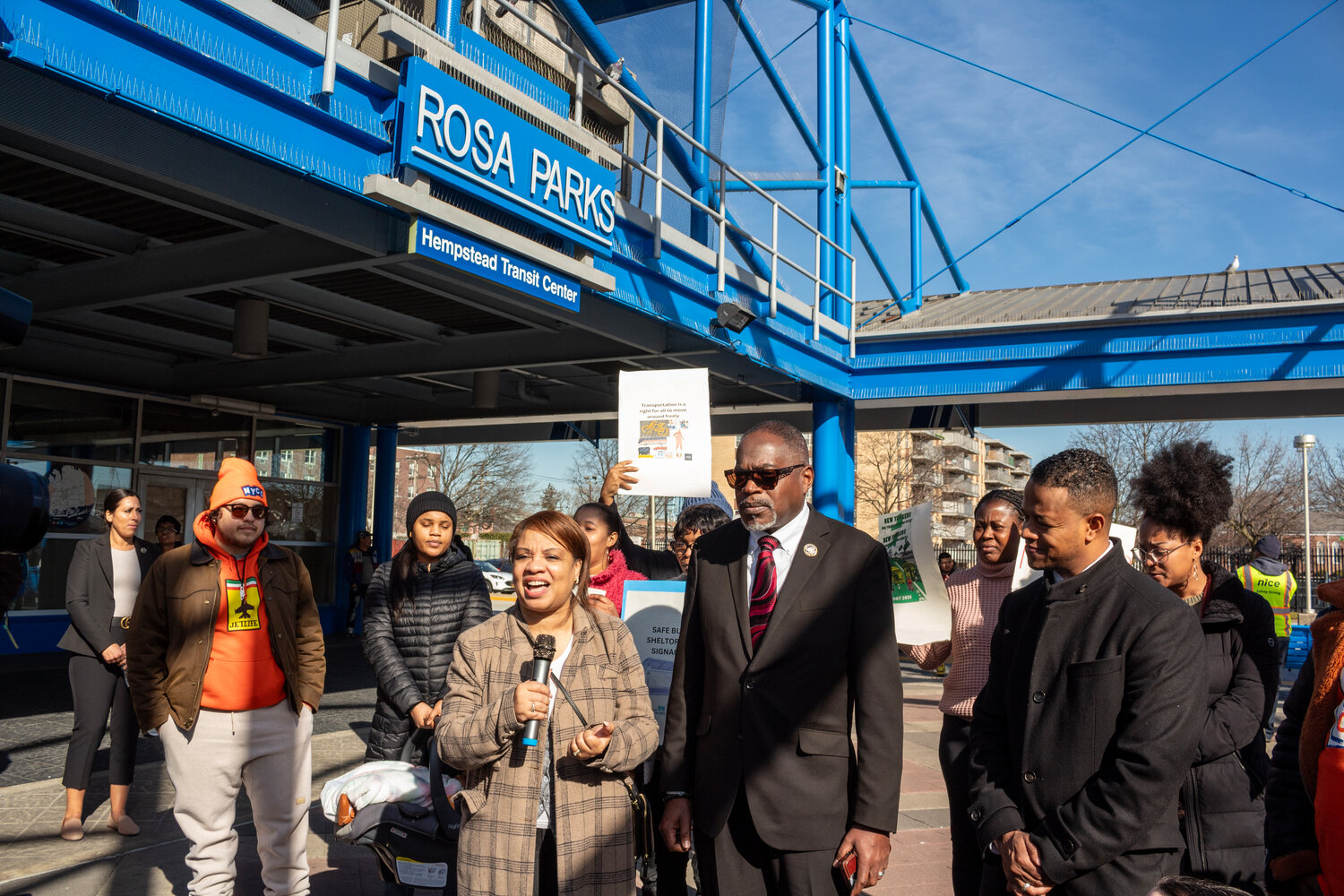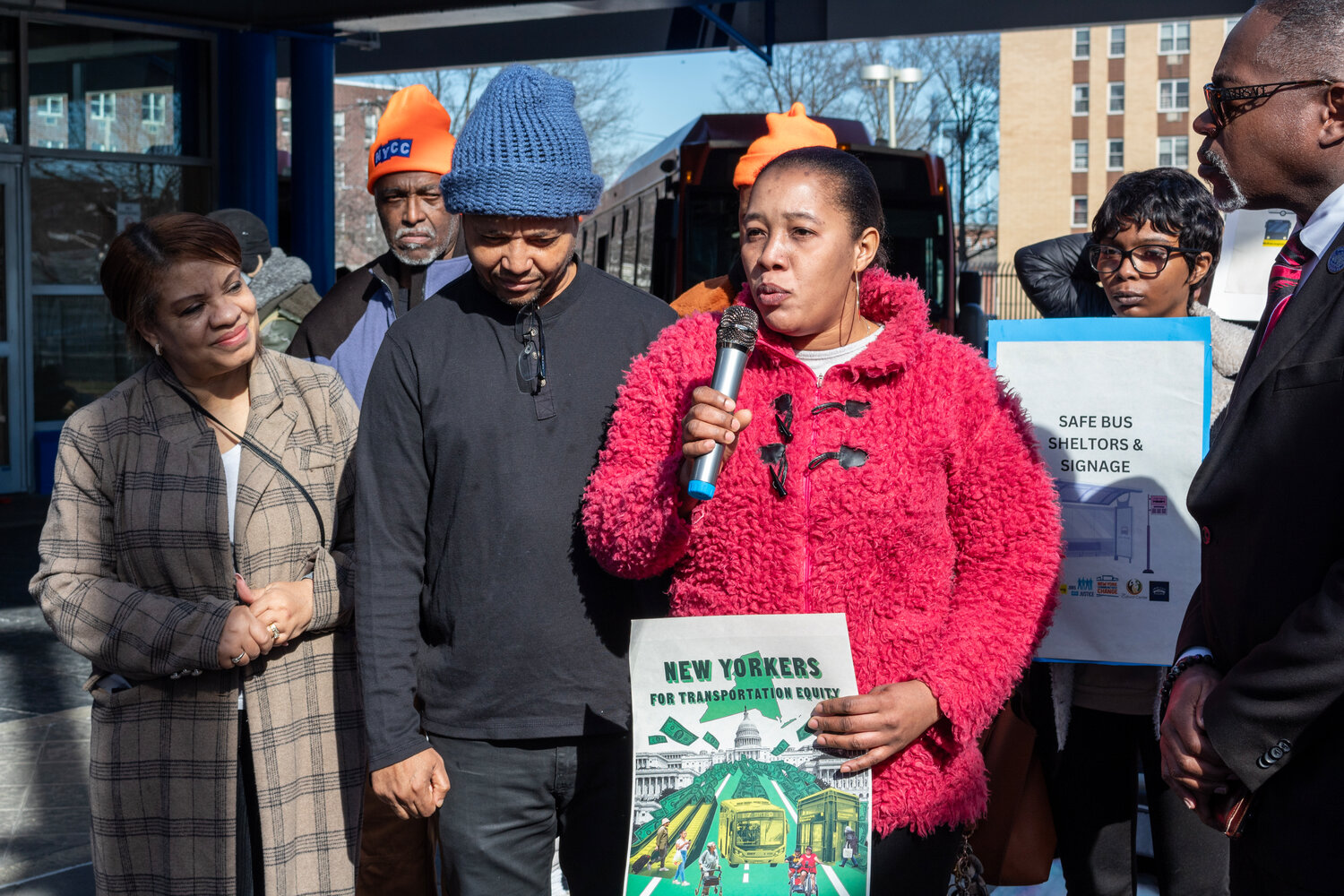Elmont activists protest NICE bus system deficiencies
The advocates from the Elmont Cultural Center met up with Legislator Carrié Solages Feb. 8 for a ride along to protest deficiencies in the Nassau Inter County Express bus system.
Chief complaints of the ECC are the lack of connections between different parts of town, lack of frequency of the buses, lack of bus shelters and the lack of affordability of taxis to replace them.
“Our priority should be to have more access to transportation in all areas of our community, especially the areas where we’re paying a lot of property taxes,” Solages said.
Solages noted that property taxes being paid aren’t coming back to the communities equitably. He helped create the FLEXI bus line with the local government and the NICE corporation, but feels the service is insufficient.
“The cost of living is just unsustainable and unrealistic,” Solages said. “It really becomes about rich versus poor. Anyone fighting these improvements is just perpetuating these inequalities.”
For example, the FLEXI line doesn’t show up at Russell Avenue and Dutch Broadway until 4 p.m. on weekdays. If someone needs to get to work, they have to walk or take a taxi to a different bus stop.
“There were so many times where I was late to work,” said bus rider and ECC member Tamar Paoli-Bailey. “Sometimes the N1 can be 30 minutes to an hour late. If you waited 30 minutes for the bus, and they didn’t come, you have to walk another 15 minutes to a different bus. Sometimes there isn’t even room on that bus.”
During the ride along, because NICE heard about the protest, they sent a bus just to take the group to Hempstead Terminal and back to Russell Avenue and Dutch Broadway.
“Unless I’m getting a ride, I’m at home,” Paoli-Bailey said. “Without connection to things, it’s really hard.”
According to Paoli-Bailey, one immigrant didn’t have enough money for a taxi, and was beholden to the bus system. Sometimes they were late and almost lost their job.
“If you don’t speak English, you don’t have a phone and you don’t have wifi, you just sit here,” said Mimi Pierre-Johnson, a leader of the ECC.
Pierre-Johnson suggests that bus stop signs should come in multiple languages to assist the diverse population that uses the system.
One rider, Guerda Synal, who speaks Haitian Creole, said that she doesn’t speak English very well yet, so seeing bus stop signage in her language is crucial. She and her children left Haiti due to political unrest and violence.
The FLEXI bus transports about 150 passengers daily, which is just a fraction of the number of people who need to ride the bus. NICE has given away $1.2 million in free metro cards.
“What we can control is hopefully your rider experience, which is what we’re here for,” said Jack Khzouz, chief executive of NICE.
Khzouz said the funding looks stable, which means there’s enough to fund what they currently have. Their priority is to increase frequency of the buses. He also said the five-year plan includes adding more bus shelters and digital signage.
There are 3,400 stops in Nassau County, and Khzouz said they can’t all have shelters. An obstacle for constructing shelters is the lack of space on sidewalks where the stops are located.
At the apex of the ride along at Hempstead Terminal, there were several speakers who addressed the issues with the bus system.
“Very importantly on top of that, this is also the solution when we talk about a clean environment,” said Daniel Velasquez, an advocate from the New York Communities for Change.
“As we know, CO2 emissions from vehicles are insane. But with buses, it’s a more communal way to go around. It’s a place for people to get to know each other.”
Velasquez added that it takes him 40 minutes longer to get to work when he uses the bus versus driving. He also hopes that the people driving the buses are paid fairly for what they do.
Jamasia Moore, another NYCC advocate, said that she has seen buses speed past her when she’s waiting for them at the bus stop. She then has to wait another 15 to 20 minutes for the next bus to arrive, and that’s if they’re not running late.
Peggy Perkins, another NYCC advocate, said she’s losing more than she’s gaining when she has to pay for a taxi. She’s a healthcare worker and mother of three.
“We know there’s a lot of funding, there’s billions of dollars in New York State for transportation,” Pierre-Johnson said. “We’re fighting to make sure our elected officials, our government, their budgets reflect that budget. Not for highways and byways and expanding roads, but for the people, for the riders. That is what we’re asking for.”

